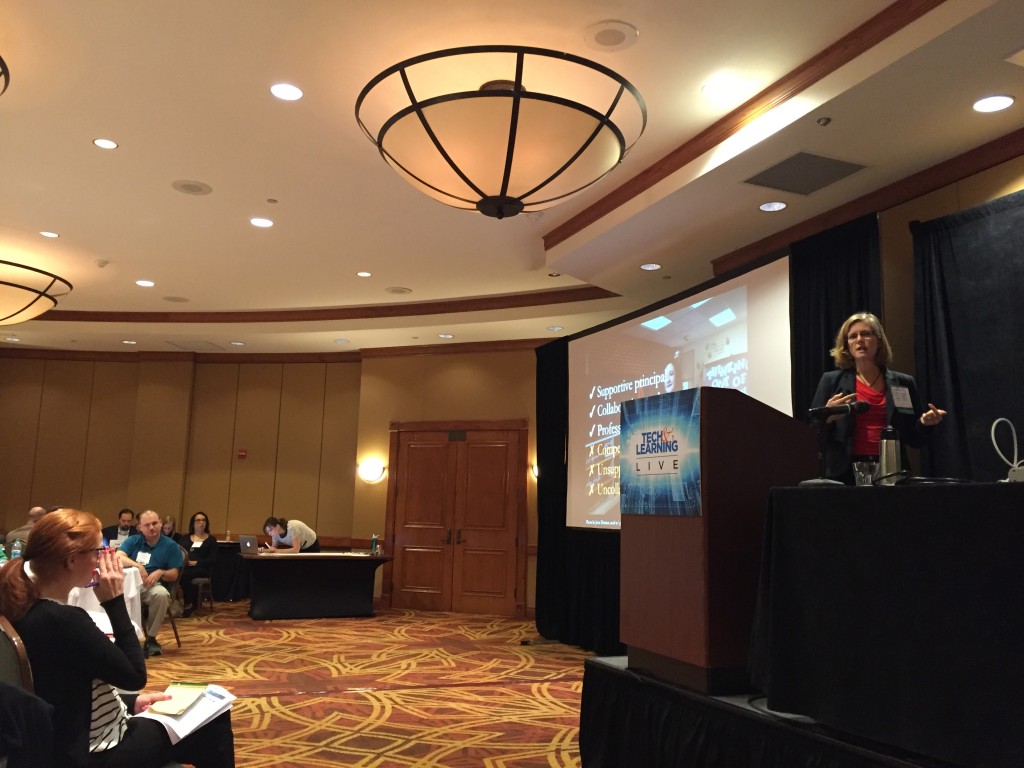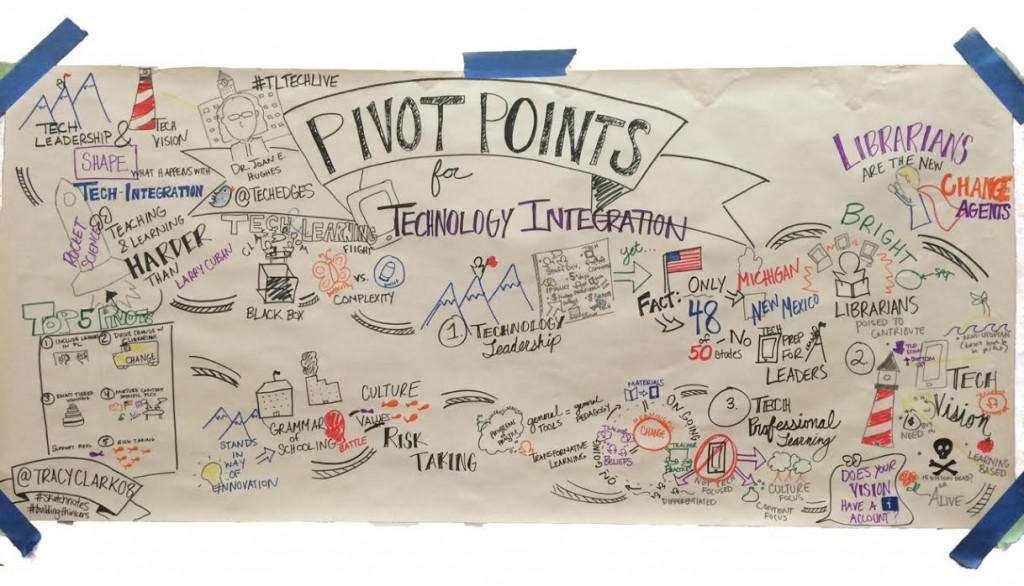5 Pivot Points for Technology Integration
 Yesterday, I keynoted the Tech & Learning Live Austin event. The day was spent considering professional learning and technology integration. In my morning keynote, I shared classroom and school-based research insights on technology integration. Specifically, I talked about how technology leadership, technology vision, and professional learning shape successful technology integration efforts in K-12 schools. The talented Tracy Clark @tracyclark08 sketched the content, which is also included below.
Yesterday, I keynoted the Tech & Learning Live Austin event. The day was spent considering professional learning and technology integration. In my morning keynote, I shared classroom and school-based research insights on technology integration. Specifically, I talked about how technology leadership, technology vision, and professional learning shape successful technology integration efforts in K-12 schools. The talented Tracy Clark @tracyclark08 sketched the content, which is also included below.
I ended the keynote with 5 research-based actions schools can do to pivot towards successful technology integration. They include:
#1: If school leaders must tend to their own technology learning*, we should be inviting them to the professional learning opportunities we arrange in schools and districts. And leaders – you should go! I’ve created opportunities for leaders to engage with actual technology-supported lessons for K-12 learning, and they loved this so much. *Research shows that only 2/50 states require technology preparation course for school leadership degrees, and examination of school leadership curricula reveals 92% of 137 programs do not mention technological courses or preparation. Of the 7%, the technology relates to data-driven decision making, not teaching and learning with technology.
#2: Librarians are the new technology integration change agent*! Use this to your advantage. Hire and cultivate technology-interested librarians and encourage their contributions to your leadership team. *Research shows that librarians contribute to technology leadership activities because of their knowledge of pedagogy, curriculum, technology, and collaboration. Enablers of librarians to do this work include (a) supportive principal, (b) collaborative teachers, and (c) engagement with professional organizations. A disabler is a competitive instructional technologies.
#3: While an optimal technology vision has had input from constituents, not everyone participates in that process*. To increase awareness and buy-in for your technology vision, enact tiered visioning through small groups or PLCs, grade level teams, subject area teams) who develop their own mini technology vision. Think of these mini-visions as a wedding cake – the largest cake bases are built from these small group mini-visions and support and relate to the overarching school or district vision (the top tier). This can enable top-down and bottom-up visioning and enactment at the classroom level. *Research shows more success with technology integration if the technology vision is learner-focused, curricular-focused, and pre-planned in collaboration with stakeholders, such as leaders, technology directors, librarians, teachers, parents, and students. They can emerge from top-down or bottom-up processes as long as the visions are communicated widely and garner buy-in among stakeholders.
#4: Nurture content-specific, ongoing professional learning, such as in professional learning communities (PLCs) that examine problems of practice (POPs)*. If these PLCs have created mini visions (see Pivot #3 above), it’s a logical next step to work on enactment (with support). *To have meaningful, transformative technology integration, research shows the materials (e.g., technologies) must change but that is not sufficient. You must also change teacher beliefs and teacher practices.
#5: If we are asking teachers to change their practices and beliefs, then we must support real risk-taking by working towards cultural change*. *Changing our beliefs and practices will challenge the “grammar of schooling,” which is a school’s engrained educational format and goals. Thus, the kind of change you are working towards will necessitate changes in school culture. School leaders who are successful in technology integration create value and appreciation and support for risk-taking, exploration, and innovation.
This presentation is licensed under a Creative Commons Attribution-NonCommercial-ShareAlike 4.0 International License. Please feel free to share with others, with attribution.
The content of what I spoke about is in the NOTES of the presentation.
 Sketch by Tracy Clark
Sketch by Tracy Clark
SXSWedu 2014 Presentation and Audiorecording
I’ve included my slidedeck and audiorecording for my presentation How mentorship puts the “ed” into “edtech,” a presentation chosen as part of the EdTech Women‘s Lightning Series: At the Helm: Women’s Impact on EdTech. Margaret Roth (@teachingdaisy) from EdTech Women introduces me, and my talk begins at 27 seconds. The presentation at Slideshare has slide notes that reflect what is in the audio narration.
Narration: